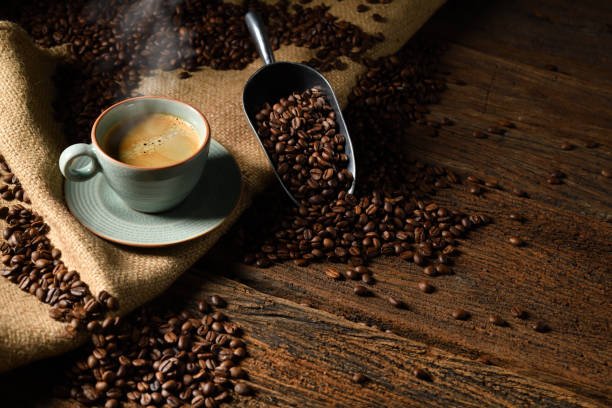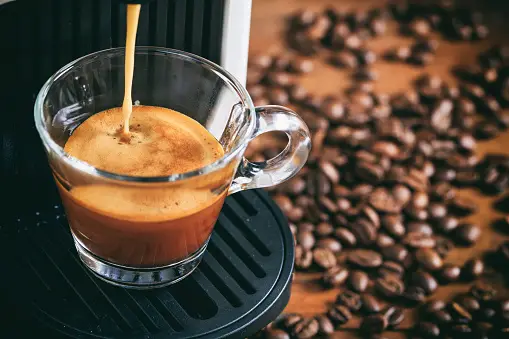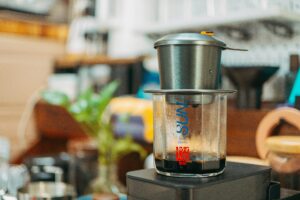With the relentless growth of the coffee culture, the once-simple question of “what is the difference between espresso beans and coffee beans” has morphed into a rich, nuanced debate. Every aromatic cup consumed by coffee aficionados is underpinned by bean variety, roast, grind, and preparation method. If you’re a part of the growing tribe of home baristas who strives to understand what transforms a handful of beans into an exquisite mug of java, this article is your personalized guide in the art of brewing.
Table of contents
The Basics: Understanding the Origins of Beans

What are Coffee Beans?
Coffee beans, the epicenter of all our caffeinated delights, are the seeds found inside the vibrant red or yellow fruits of the coffee plant. These beans come in two main varieties—Arabica and Robusta. Arabica, known for its smooth, aromatic flavor profile, tends to be grown in higher altitudes, whereas Robusta, with its stronger, more bitter notes, thrives in lower elevations. This difference in growing conditions results in disparate taste and caffeine levels; Arabica is slightly lower in caffeine whereas Robusta boasts a vigorous kick.
The Details in the Drizzle: It’s All About Preparation
Understanding Espresso Beans
Espresso beans are a specialized type of coffee bean. The term “espresso” doesn’t refer to the beans themselves but to the method of preparation – rapidly forcing a small amount of hot water through finely-ground coffee beans. For this very reason, espresso beans are often roasted for a longer time to bring out the oils and flavors needed to create a rich, concentrated shot of coffee. The taste is often fuller and more robust than what you’d expect from a regular cup of joe.
How They Cook the Beans
Processing and Roasting Differences
Espresso and coffee beans are often processed differently. Espresso coffee is often prepared from a blend of different coffee bean types which may be roasted together. These beans are then finely ground to allow for the pressurized water to expose more surface area. Additionally, espresso-friendly beans are sometimes roasted to a specific temperature (around 475-500°F) to achieve a dark finish, resulting in a robust taste.
In contrast, the beans meant for regular coffee are usually coarsely ground, and the roasting temperature can be slightly lower (around 375-400°F) and with a shorter duration. This cater to a longer brewing process, to reveal the nuanced flavors that characterize regular coffee brews.
The Weight of your Choices
Health and Environmental Considerations
While both espresso and coffee can have their share of health benefits, such as improving cognitive function and physical performance, they also come with potential drawbacks. The high concentration in espresso can sometimes be harder on the stomach, leading to more discomfort than regular coffee. From an environmental perspective, the coffee consumers choose speaks volumes. Mass production of lower grade Robusta beans for espresso may have a more significant impact on the environment than the farming of the typically more sustainably-grown Arabica.
A Roast to Rule Them All
Making the Right Choice
In the end, choosing between espresso and coffee beans comes down to personal preference and the kind of experience you wish to create. Espresso lovers revel in the bold flavors and the layered complexity of a well-pulled shot, while the sensually slow unfolding of flavors in a cup of coffee can be a daily meditation for many. If health concerns or ethical thinking push you towards a more considered choice, then a shade-grown, ethically sourced, fair trade Arabica may be your new best friend, whether brewed as espresso or coffee.
When making your choice, consider experimenting with different beans to understand how the different characteristics influence your enjoyment. Evaluate the cost, considering not just the initial bean price but also the cost of the equipment to brew your favorite style. Finally, listen to your body. Caffeine has its effects, and knowing how it affects you personally is crucial.
A Descent into the Bean’s Soul
The Ultimate Grind
While the battle of the beans may rage on, remember that each cup tells a story. A story of a bean’s voyage from a farm to your grinder, of hands that have nurtured and safeguarded the delicate flavors, and of the alchemy in your kitchen or at your favorite café that transforms these hard, little things into a moment of pure indulgence.
Whether it’s the morning espresso that kick-starts your day or the evening latte that accompanies quiet reflections, your choice in beans shapes your narrative. With every aromatic sip, you are telling the tale of your unique relationship with the very essence of life—coffee.
In the quest for a perfect cup, approach your choice of beans with the same reverence you give to your brewing. Delve into the sourcing, the toils, and the craftsmanship—beyond just the superficial labels. The world within your cup is vast, and just like the world around you, it’s worth exploring one bean at a time.
And if, in the end, the beans you choose lead to more questions, that’s perfectly fine. Curiosity is the seasoning of discovery. It’s what makes the mundane magical and the daily, divine.
Now, go forth and brew your next cup of liquid poetry, with beans that resonate with you on a level deeper than mere taste buds. For when the beans align with your spirit, the aroma and flavor become a celebration of life’s subtler joys.

Frequently Asked Questions (FAQ)
Q: Can I use espresso beans to make regular coffee?
A: Absolutely! Espresso beans are essentially coffee beans that have been roasted to a degree which is often preferred for espresso. However, you can use them to brew regular coffee as well. The resulting cup will likely have a fuller and richer flavor.
Q: Is there a difference in caffeine content between espresso and regular coffee?
A: Yes, but it depends on how you measure it. Ounce for ounce, espresso has more caffeine than regular coffee due to its concentrated form. However, a typical serving of espresso is much smaller than a serving of coffee, so you may actually consume more caffeine with a regular cup of joe.
Q: How should I store my coffee beans to keep them fresh?
A: For optimal freshness, store your coffee beans in an airtight container at room temperature. It’s best to keep them away from direct sunlight, extreme temperatures, and moisture. Do not store them in the fridge or freezer as this can introduce moisture and affect the taste.
Q: Can the type of water I use affect the taste of my coffee?
A: Definitely. Water quality can greatly influence the outcome of your coffee. It’s best to use filtered or bottled water if your tap water is hard or has a strong taste or odor.
Q: How long do coffee beans stay fresh after opening the bag?
A: Coffee beans are best used within one to two weeks after opening for the freshest taste, although they can last longer. If you won’t use them within that time, consider storing a portion in an airtight container and the rest in the freezer in small batches to prolong their freshness.
Q: Is it better to buy whole bean or ground coffee?
A: Whole bean coffee tends to offer a fresher, more flavorful cup of coffee because the flavors begin to degrade once the beans are ground. Buying whole beans and grinding them just before brewing is the best way to ensure the freshest taste.






